
Wetenschap
Hoe astronomen nieuwe werelden najagen in TESS-gegevens
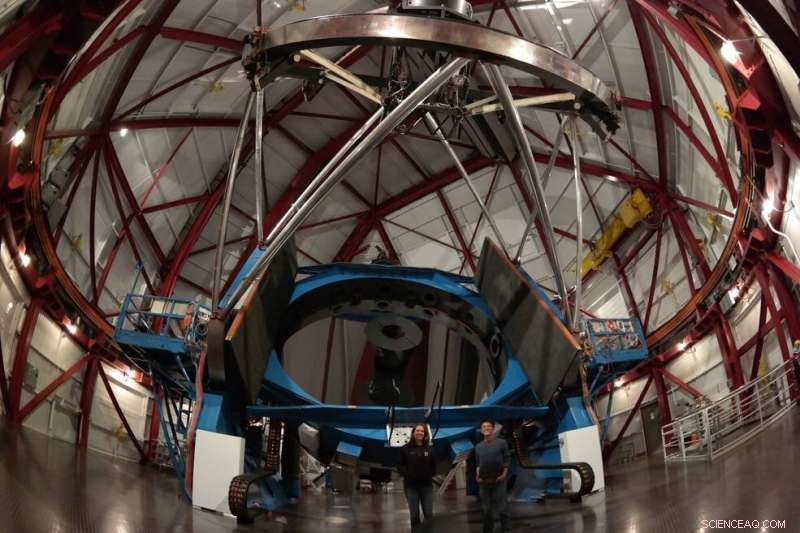
Astronomen Johanna Teske en Alex Ji bij de Magellan II-telescoop in Chili. Krediet:Cindy Hunt
Terwijl roze vloeistof rond haar schoenen sijpelde, astronoom Johanna Teske begon ziek te worden. Ze was op zoek naar nieuwe planeten met de Planet Finder Spectrograph, een astronomisch instrument dat lijkt op een koelkast van industriële grootte die op de Magellan II-telescoop is gemonteerd. Op een nacht in oktober 2018, een slang die naar het instrument leidde, barstte, waardoor roze koelvloeistof op gevoelige delen van het instrument en het omringende platform terechtkomt. Zou Teskes zoektocht geruïneerd zijn?
Teske gebruikt de Magellan II-telescoop van het Las Campanas Observatorium in Chili om planeten buiten ons zonnestelsel te lokaliseren, of exoplaneten, en ontdek waar ze van gemaakt zijn. Daten, meer dan 4, 000 exoplaneten ontdekt, maar de wetenschap heeft aangetoond dat er miljarden moeten zijn, of zelfs biljoenen, alleen in onze melkweg. NASA's nieuwste planeetjager, de Transiting Exoplanet Survey Satellite (TESS), zoekt naar mogelijke planeten rond nabije heldere sterren.
Veel teams van wetenschappers over de hele wereld kammen momenteel door TESS-gegevens, het kiezen van sterren die veelbelovend zouden kunnen zijn om vanaf de grond te observeren en het boeken van tijd bij krachtige telescopen om nieuwe planeetkandidaten op te volgen. De race is begonnen om te zien welke van die TESS-signalen een soort bedrieger vertegenwoordigen, en die wijzen op echte nieuwe werelden.
Als NASA Hubble Postdoctoral Fellow bij Carnegie Observatories in Pasadena, Californië, Teske was enthousiast om mee te doen aan deze race. Haar groep ontving NASA-financiering om planeten te zoeken met drie keer de straal van de aarde of minder, waaronder vreemde planeten die 'superaarde' worden genoemd. Men denkt dat superaardes rotsachtig zijn zoals de aarde, maar iets groter dan onze planeet. In oktober 2018, Teske en collega's begonnen voor het eerst met TESS-opvolgobservaties. Maar ongeveer halverwege hun twee weken durende run, tijdens hun helderste nacht, de pijp barstte.
Zou de leiding snel genoeg gerepareerd kunnen worden en de rotzooi opgeruimd om de rest van Teskes observatietijd te besparen? Zouden zij en haar team waardevolle gegevens over exoplaneten verzamelen?
Waarom planeetjagen vanaf de aarde essentieel is
Teske's dramatische nacht in Chili is niet typisch, maar illustreert hoe het zoeken naar exoplaneten vanaf de grond bemoeilijkt kan worden door aardse zorgen. Behalve af en toe een mechanisch probleem, astronomen hebben te kampen met wind, regenen, sneeuw, wolken en algemene atmosferische turbulentie - die allemaal een hele nacht kijken naar de hemel kunnen verpesten. De maan biedt ook uitdagingen:hoewel TESS-sterren over het algemeen helder zijn en kunnen worden waargenomen tijdens "heldere tijd", dat wil zeggen, wanneer de maan ongeveer driekwart vol is, moeten astronomen die naar zeer zwakke sterren of andere melkwegstelsels kijken, wachten op 'donkere tijd' wanneer er weinig tot geen maanlicht is. En, aangezien astronomen alleen 's nachts kunnen observeren, ze moeten afzien van slaap tijdens uren van kostbare duisternis.
Maar telescopen op de grond zijn essentieel voor het bevestigen van het bestaan van planeten die TESS en andere ruimtetelescopen vinden, en om er meer over te leren. TESS, zoals de in de ruimte gestationeerde planeetjager Kepler, wiens missie eindigde in 2018, staart naar sterren gedurende perioden, wekenlang meten hoe helder de ster is om de paar minuten. Een dip in die helderheid kan een gebeurtenis vertegenwoordigen die een "transit, " waarin een planeet voor zijn ster passeert. Maar de dip kan net zo goed van een andere ster komen, of een ander soort voorbijgaand fenomeen zijn dat optreedt op de ster of in de detectorelektronica.
Wetenschappers moeten zich wenden tot telescopen op de grond om dit uit te zoeken. Toen Kepler gegevens terugstuurde die duidden op duizenden nieuwe planeten, astronomen organiseerden zich om hen op te volgen, te. De resultaten leidden tot het besef dat er meer planeten dan sterren in de Melkweg zijn.
"De helderheidsmetingen van het ruimtevaartuig zijn slechts de eerste stap, " zei David Ciardi, astronomer at the California Institute of Technology, Pasadena. "You need a dedicated ground program to vet and clarify what you see. Without the ground data, you can't understand what TESS has seen."
In sommige gevallen, there may be data collected from a star in years past that contain the information necessary to confirm a planet candidate—such as in the case of TESS's first confirmed planet Pi Mensae c. Anders, astronomers need fresh observations to learn all they can about these alien worlds.
And because they are accessible to human hands, ground-based telescopes can be upgraded, fixed and re-tooled much more easily than space observatories. In sommige gevallen, ground-based telescopes have higher resolution for taking images of stars than space telescopes.
"We have a lot of questions about every single planet, " said Lauren Weiss, the Parrent Postdoctoral Fellow at the University of Hawaii at Manoa. "There are a lot of small planets that we're really excited about, but in order to answer all of these questions, we have to use a variety of new tools and techniques."
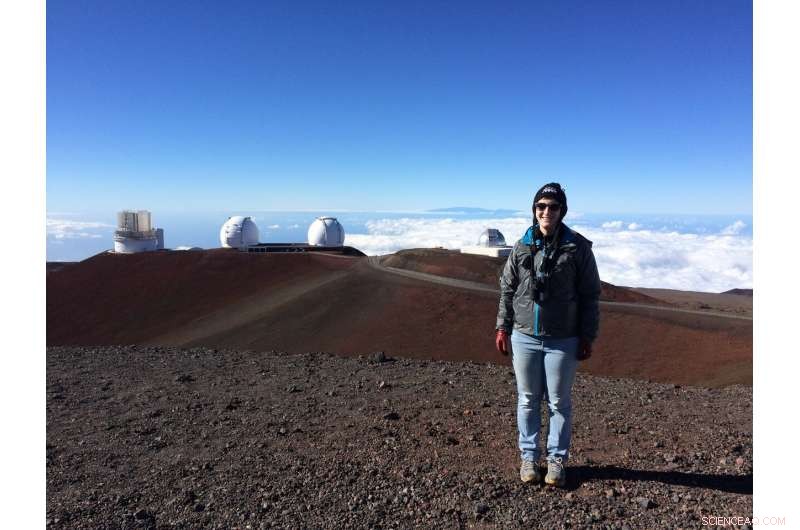
Astronomer Lauren Weiss at the W. M. Keck Observatory in Hawaii. Credit:B.J. Fulton
Ground-based follow-up is more critical than ever now that astronomers are gearing up for NASA's upcoming James Webb Space Telescope, which will study exoplanet atmospheres with greater sensitivity than any observatory yet. Webb will look for the fingerprints of chemicals in exoplanet atmospheres, including those allowing life as we know it to thrive. But because Webb will target many different scientific questions about the universe, it will only have a portion of its time for looking at exoplanets. Astronomers need to start finding the most promising targets now so that they're ready to explore them further as soon as Webb starts operating.
But first, scientists need to be sure those planets are really there.
What Ground-Based Telescopes Do
One of the first facts a scientist needs to know about a possible exoplanet is:Which star does the planet orbit? This fundamental puzzle piece isn't immediately obvious from telescope data because all astronomers can see are individual pixels from the telescope camera, each corresponding to an area of the sky. If two stars appear extremely close to each other in these data, it may not be obvious which star seems to be dimming because of a transiting planet.
"The ground-based efforts can determine which star is the source of the signal, " said Knicole Colon, astronomer at NASA's Goddard Space Flight Center in Greenbelt, Maryland. "That's absolutely a major part of the ground-based follow-up:Which star is the host?"
Vervolgens, there's a separate process of getting the mass of the planet. No one can put a planet on a scale. But a planet's mass is often determined through the "radial velocity method", or looking at how the star wobbles ever so slightly in response to the gravity of its planets. Momenteel, only ground-based telescopes are capable of exoplanet radial velocity measurements. Carnegie's Planet Finder Spectrograph, which Teske uses at Las Campanas in Chile, is just one instrument that can determine a planet's mass. The forthcoming NEID spectrograph, a collaboration between NASA and the National Science Foundation, at Kitt Peak Observatory in Arizona, is another example.
The mass of a planet is different from its size, which refers to its diameter. Scientists measure diameter by looking at how much the brightness of the host star dims during the transit.
Combining the size and the mass of the planet, scientists can determine its density—a big indicator of whether it is rocky, like Earth, gaseous, like Jupiter, or something in between, which would be unlike any of the planets we have in our solar system.
Astronomers also use Earth-based telescopes to thoroughly study the stars themselves to determine planet properties. Any size or mass measurement of a planet can only be calculated relative to the size and mass of its host star. And if the star is part of a double-star or multi-star system, that could change the calculations entirely unless astronomers can determine the fraction of light originating from other nearby stars, and factor it into their calculations.
With so many different properties of star and planet observations to consider, it often takes large groups of scientists working with different instruments to arrive at even a basic understanding of a planetary system.
"That's why these teams are so big, " Weiss said. "Each of us has to address a very specific question, or set of questions, related to the validity of the planetary hypothesis, and the fundamental properties of the star and planet."
A planet that Weiss helped discover, TOI-197b (also called HD 221416b), is a particularly good example of how a giant collaboration of people using observatories in space and on the ground can paint a picture of a new world. The study announcing it to the world, published in April 2019, was authored by more than 100 people representing five different continents. Astronomers found out a lot about the age and radius and mass of the star because of the special way they have been able to examine its properties.
"The star is ringing like a bell from internal pressure waves and gravity waves inside the star, " Weiss said. The study of these waves, called asteroseismology, is a powerful tool for characterizing a star.
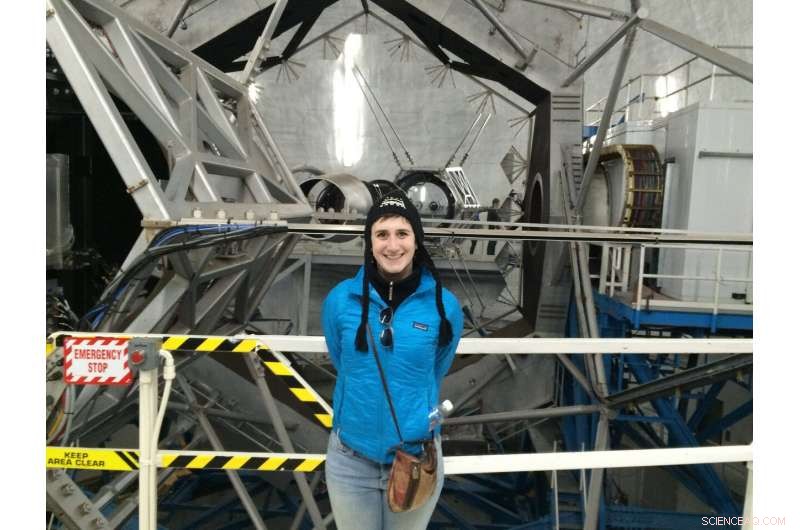
Astronomer Lauren Weiss looks at planets outside our solar system using the Keck Telescope in Hawaii. Credit:B.J. Fulton
Multiple observatories worldwide including Keck Observatory at Mauna Kea in Hawaii, where Weiss was situated, contributed observations. Dan Huber, the lead author, wrangled all of the different datasets together. Ashley Chontos at the University of Hawaii created a model to reconcile both the transit and radial velocity measurements. By matching their model to the observations, astronomers were able to put together a picture of the planet that could explain all of these different signals seen in all of the different telescopes.
Astronomers found that, at 63 times the mass of Earth, this planet is a little bit denser than Saturn. But they call it a "hot Saturn" because its orbit around its star is only 14 days (by contrast, Saturn makes a loop around our Sun every 29 years). There is nothing quite like it in our solar system.
A New Planet, and Even Another
Dus, what happened with Teske's planet search after the burst pipe incident at Las Campanas? The search for new planets motivated her to snap into action. "Pretty quickly I moved into 'how do we fix' this mode, " she recalled. "It was a big team effort for sure."
Gelukkig, the observatory staff was able to resolve the issue in a few hours. After they finished mopping and carefully checked over the instrument, Teske and colleagues resumed their exploration of exoplanets that very night, and continued for the rest of their scheduled week. Despite overnight observing for about two weeks during the telescope run, Teske didn't go home to Pasadena afterwards—she boarded a plane for Washington, gelijkstroom, where she ran a marathon.
Their observations from that trip helped scientists determine the mass of a planet around a star called HD 21749 or GJ 143. This so-called "sub-Neptune" planet is about 2.6 times the diameter of Earth and likely gaseous, but smaller than any gas giant in our solar system.
Combining the Las Campanas observations with data from TESS and archival data from the HARPS instrument at La Silla, Chili, astronomers were able to confirm this exoplanet and determine its mass, which is more than 20 times that of Earth.
"While we were looking at the data for that planet, we found that there is another planet in the same system around the same star; it's about Earth's size, " said Diana Dragomir, also a NASA Hubble Postdoctoral Fellow at MIT who was the first author on a study of this system, and part of the observing team with Teske at Las Campanas. "It's a nice demonstration that TESS can indeed find Earth-size planets."
During the same observing run, Teske and colleagues also got some measurements of Pi Mensae c, the very first planet confirmed in TESS data, that may help get a better handle on its mass. With more data left to sift through, discoveries may be yet to come from that same observing run in October 2018.
Since TESS recently turned its gaze to the northern hemisphere of the sky, the Chilean telescopes will be out of range for much of the next batch of data. That gives Teske and collaborators time to go back through what they've done so far, and figure out which southern TESS stars they want to keep following over the next two years. Their goal is to find out more about super-Earth and sub-Neptune exoplanet populations by establishing masses for such planets as precisely as possible.
At nearly 8, 000 feet up, Las Campanas isn't high enough to make Teske feel dizzy from the altitude, but high enough that she might get out of breath from walking fast. A variety of wildlife, like foxes and rabbit-like animals called viscachas, sometimes approach the dome as Teske and her collaborators explore the galaxy. She knew she wanted to be an astronomer around age 10 or 11 when she saw the movie "Contact, " based on the book by Carl Sagan, and related to the main character's drive and curiosity. Vandaag, observing in Chile is one of Teske's favorite parts of her job.
"I am getting to see things that no one else is seeing. It's quiet, and it's just me and the stars, " Teske said. "I hesitate to use the word 'magical'—but it's analogous to that."
 Wordt carbonaat beïnvloed door de temperatuur?
Wordt carbonaat beïnvloed door de temperatuur?  Solid-state batterijen kunnen schoner worden gemaakt door flash-sintering op te schalen
Solid-state batterijen kunnen schoner worden gemaakt door flash-sintering op te schalen Het begrijpen van bederf- en kwaliteitsproblemen kan de Amerikaanse ambachtelijke kaasindustrie verbeteren
Het begrijpen van bederf- en kwaliteitsproblemen kan de Amerikaanse ambachtelijke kaasindustrie verbeteren Het maken van nepvlees roept vragen op over de gezondheid, ethiek en duurzaamheid voor een voormalige slager
Het maken van nepvlees roept vragen op over de gezondheid, ethiek en duurzaamheid voor een voormalige slager Wat zijn de eigenschappen van rubber?
Wat zijn de eigenschappen van rubber?
 Vulkaan barst uit op afgelegen eiland Papoea-Nieuw-Guinea
Vulkaan barst uit op afgelegen eiland Papoea-Nieuw-Guinea Kleilagen en verre pompen veroorzaken arseenverontreiniging in het grondwater van Bangladesh
Kleilagen en verre pompen veroorzaken arseenverontreiniging in het grondwater van Bangladesh Voor het eerst ooit microplastics gevonden in de wateren van Lake Tahoes
Voor het eerst ooit microplastics gevonden in de wateren van Lake Tahoes De verschillen in vlooien en vliegen
De verschillen in vlooien en vliegen  De overstromingsfrequentie van 's werelds grootste rivier is vervijfvoudigd
De overstromingsfrequentie van 's werelds grootste rivier is vervijfvoudigd
Hoofdlijnen
- Wetenschappers identificeren verborgen genetische variatie die de evolutie helpt stimuleren
- Wat doen basale lichamen die Cilia en Flagella vormen?
- Hoe kan ik honing uit een wilde bijenkorf extraheren?
- Multiresistente genetische factoren bij malariaparasieten
- Antibiotica uit een moleculaire puntenslijper
- Deskundigen maken zich zorgen over rauw vlees-diëten voor katten en honden
- Tientallen nieuwe natuurcorridors geïdentificeerd voor Afrikaanse zoogdieren
- Welke drie organellen hebben DNA?
- Bacteriële harpoengeweer van nanoformaat werkt als een boormachine
- Stralingsdetecterende optische vezels geïnstalleerd op het internationale ruimtestation
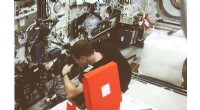
- Zelfrijdende monteur nu op baseline voor NASA's Restore-L satellietservicedemonstratie
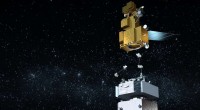
- Gegevens van antipodale plaatsen:eerste gebruik van CMB-polarisatie om zwaartekrachtlensing van clusters van sterrenstelsels te detecteren
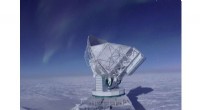
- Magnetische velden betrokken bij de mysterieuze midlifecrisis van sterren
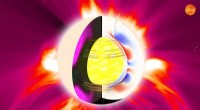
- SpaceX maakt weer een raketlancering mogelijk, het is dit jaar de 16e
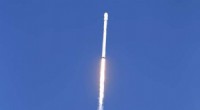
 Grafeenoxidemembranen kunnen de energiekosten van de papierindustrie verlagen
Grafeenoxidemembranen kunnen de energiekosten van de papierindustrie verlagen Astronomen vinden 72 heldere en snelle explosies
Astronomen vinden 72 heldere en snelle explosies Hoe commerciële schepen tsunami-waarschuwingssystemen kunnen worden
Hoe commerciële schepen tsunami-waarschuwingssystemen kunnen worden Microben in ondergrondse watervoerende lagen onder de diepzee Mid-Atlantische Rug eten van koolstof
Microben in ondergrondse watervoerende lagen onder de diepzee Mid-Atlantische Rug eten van koolstof Voedsel buiten de vuilstort houden
Voedsel buiten de vuilstort houden Nieuwe tools verbeteren het nutriënten- en waterbeheer van de boerderij
Nieuwe tools verbeteren het nutriënten- en waterbeheer van de boerderij VCU-uitvinders handapparaat brengt enorme verbeteringen aan het watertestproces
VCU-uitvinders handapparaat brengt enorme verbeteringen aan het watertestproces Kleiner dan klein:waarom we de ruimte tussen atomen meten
Kleiner dan klein:waarom we de ruimte tussen atomen meten
- Elektronica
- Biologie
- Zonsverduistering
- Wiskunde
- French | Italian | Spanish | Portuguese | Swedish | German | Dutch | Danish | Norway |

-
Wetenschap © https://nl.scienceaq.com

